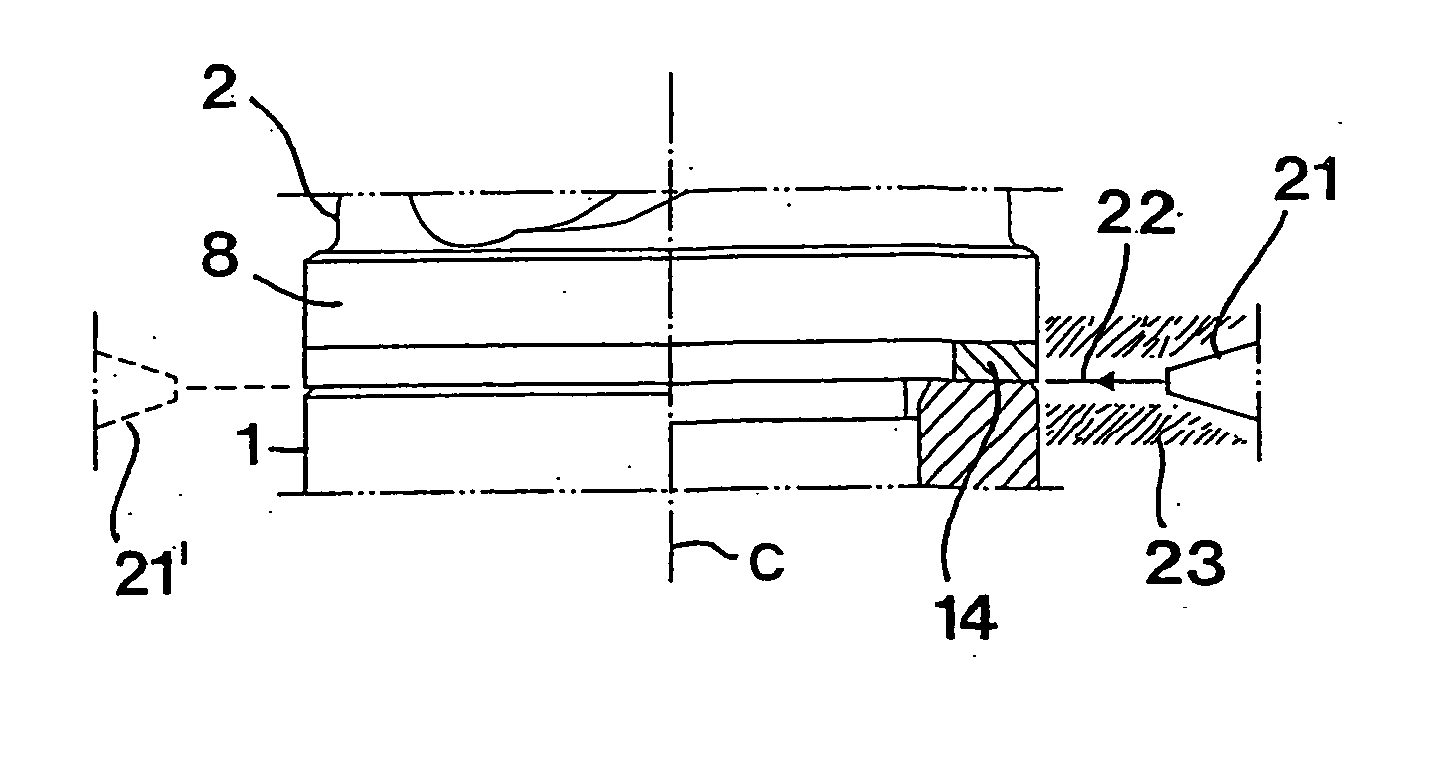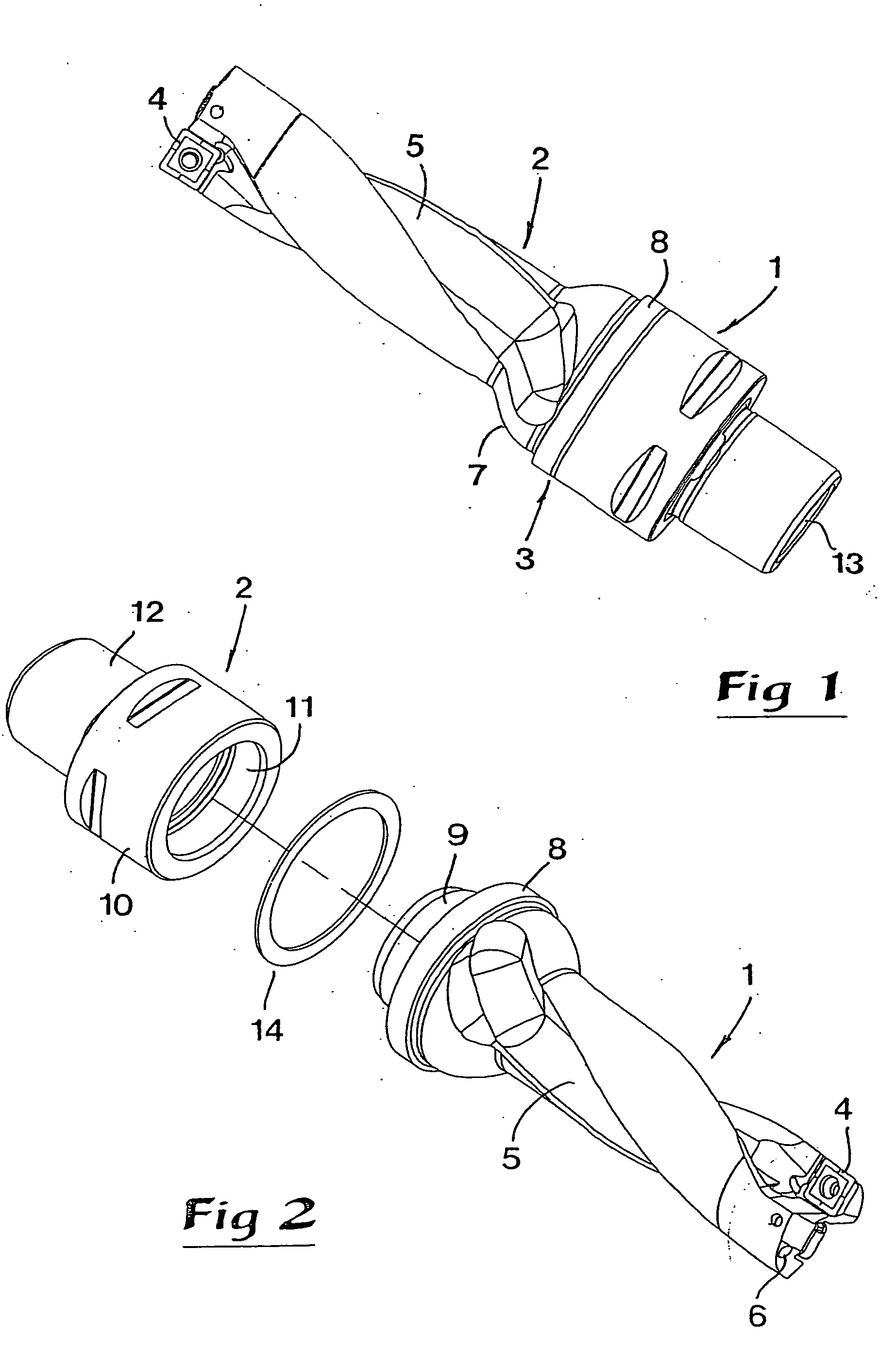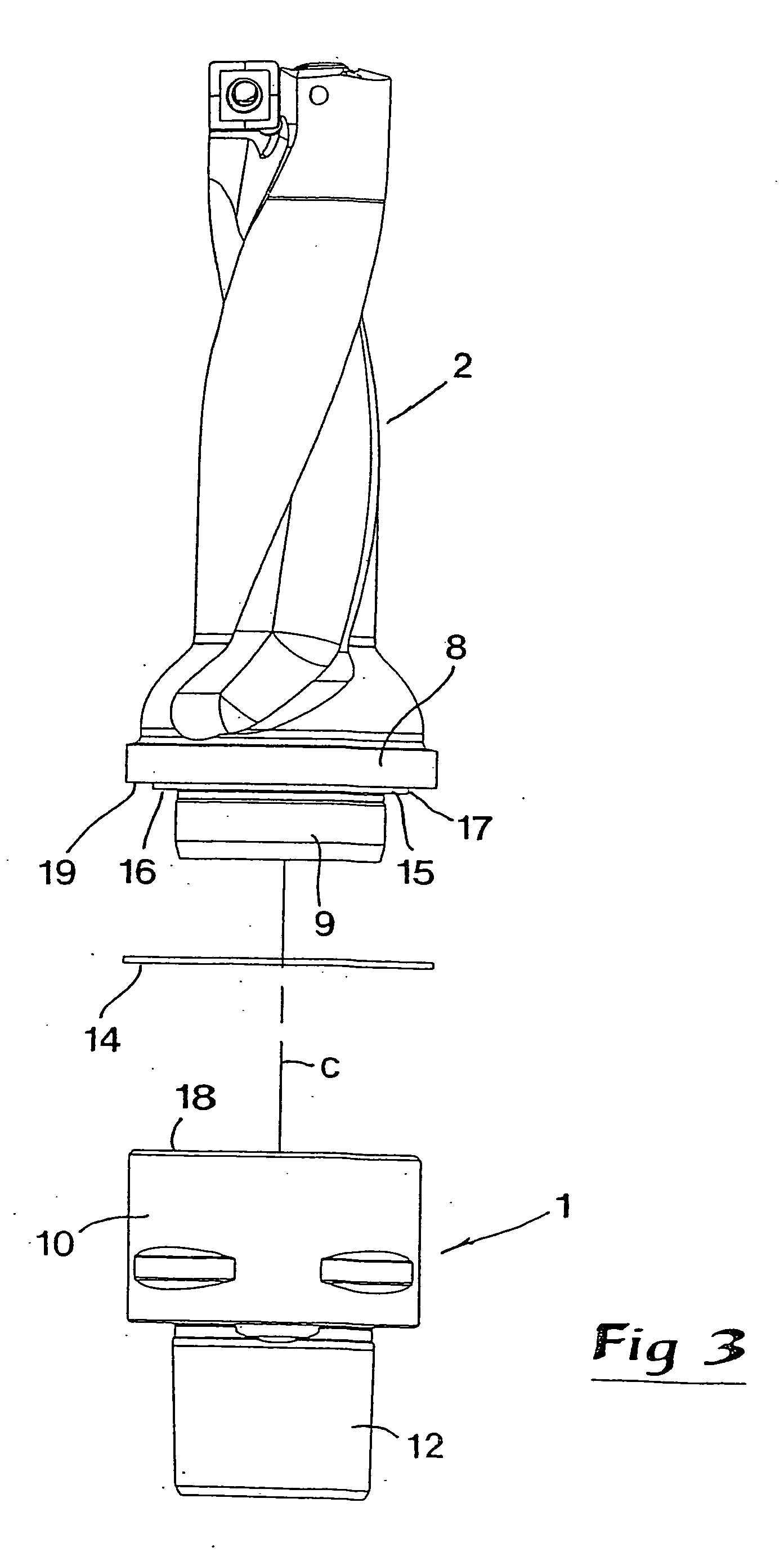Cutting tool and a method for the manufacture thereof
a technology of cutting tools and manufacturing methods, applied in the direction of manufacturing tools, tool workpiece connection, twisting drills, etc., can solve the problems of high material consumption, extra large space requirements, and the tendency of the tool to be set in vibration, and achieve the effect of reducing the tool length
- Summary
- Abstract
- Description
- Claims
- Application Information
AI Technical Summary
Benefits of technology
Problems solved by technology
Method used
Image
Examples
Embodiment Construction
[0024] As has been mentioned by way of introduction, the problems that form the basis of the present invention are primarily associated with rotatable cutting tools, one type of which, viz, a drill, is represented in FIGS. 1-5. Said drill includes a coupling part 1, as well as a second part in the form of a shank 2 permanently united to the same via an interface 3. The shank 2 has a cylindrical, long narrow basic shape and is at the free, front end thereof formed with seatings or so-called insert pockets for releasable, replaceable cutting inserts 4. In the envelope surface of the shank, chip channels 5 are formed for evacuation of chips, which are separated by the cutting inserts 4. Internally in the shank, there are also cooling-liquid channels 6, which mouth in the tip of the shank and have the purpose of cooling the cutting inserts. At the rear end thereof, the shank transforms via a successively thickened transition portion 7 in a collar 8, the envelope surface of which is cyli...
PUM
| Property | Measurement | Unit |
|---|---|---|
| relative speed | aaaaa | aaaaa |
| diameter | aaaaa | aaaaa |
| speed | aaaaa | aaaaa |
Abstract
Description
Claims
Application Information
 Login to View More
Login to View More - R&D
- Intellectual Property
- Life Sciences
- Materials
- Tech Scout
- Unparalleled Data Quality
- Higher Quality Content
- 60% Fewer Hallucinations
Browse by: Latest US Patents, China's latest patents, Technical Efficacy Thesaurus, Application Domain, Technology Topic, Popular Technical Reports.
© 2025 PatSnap. All rights reserved.Legal|Privacy policy|Modern Slavery Act Transparency Statement|Sitemap|About US| Contact US: help@patsnap.com



